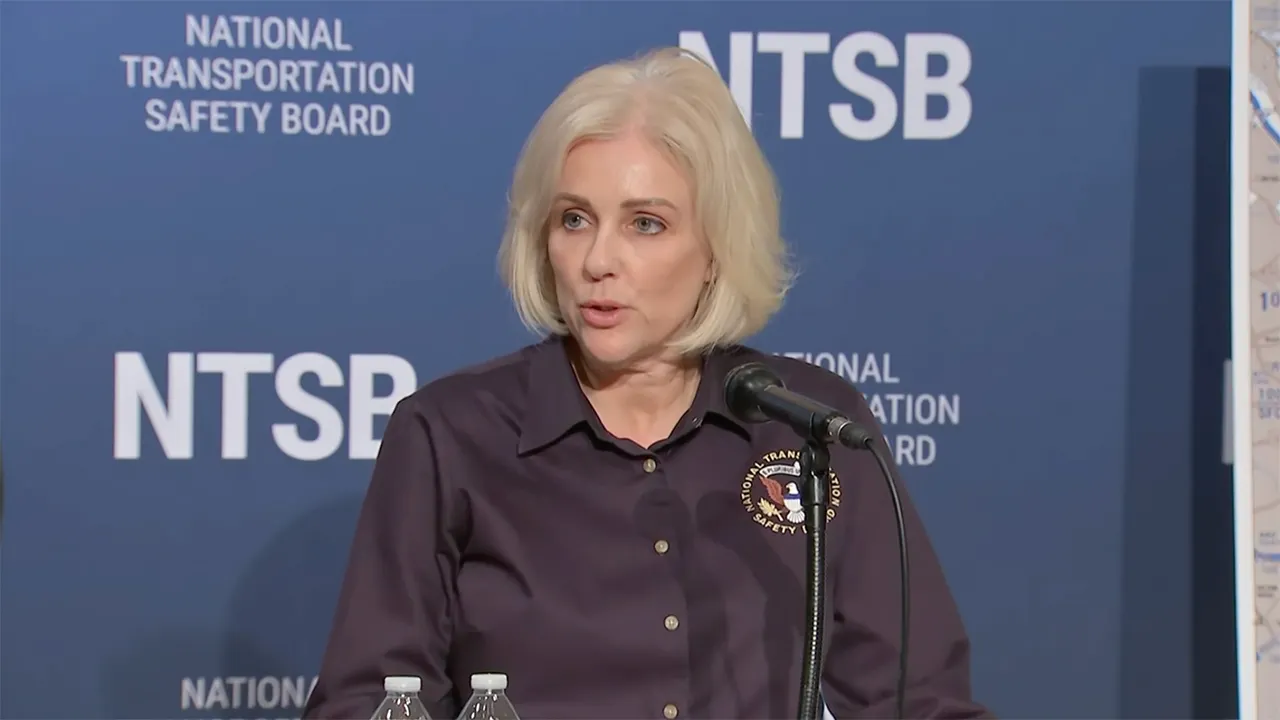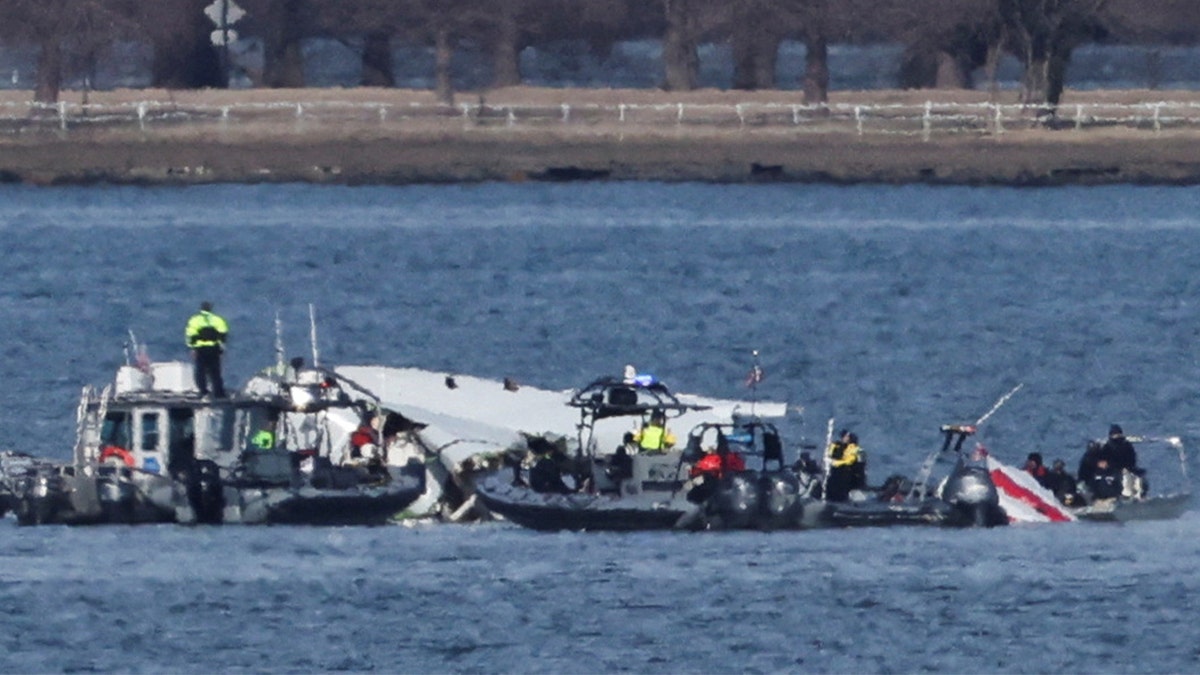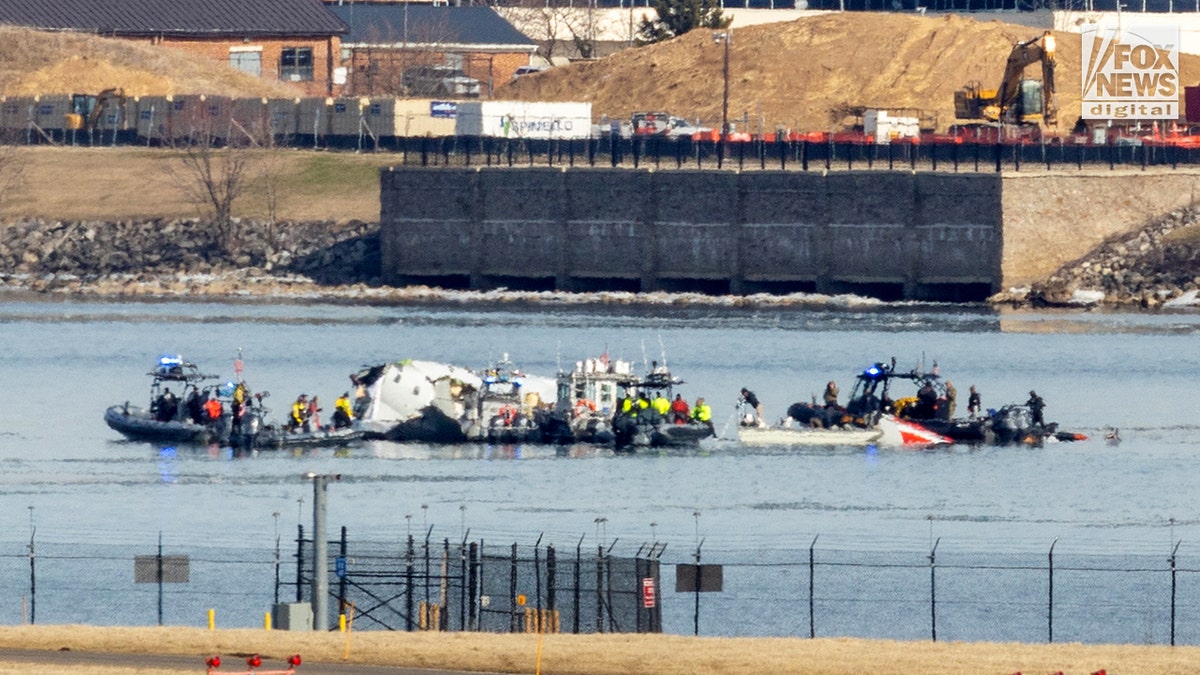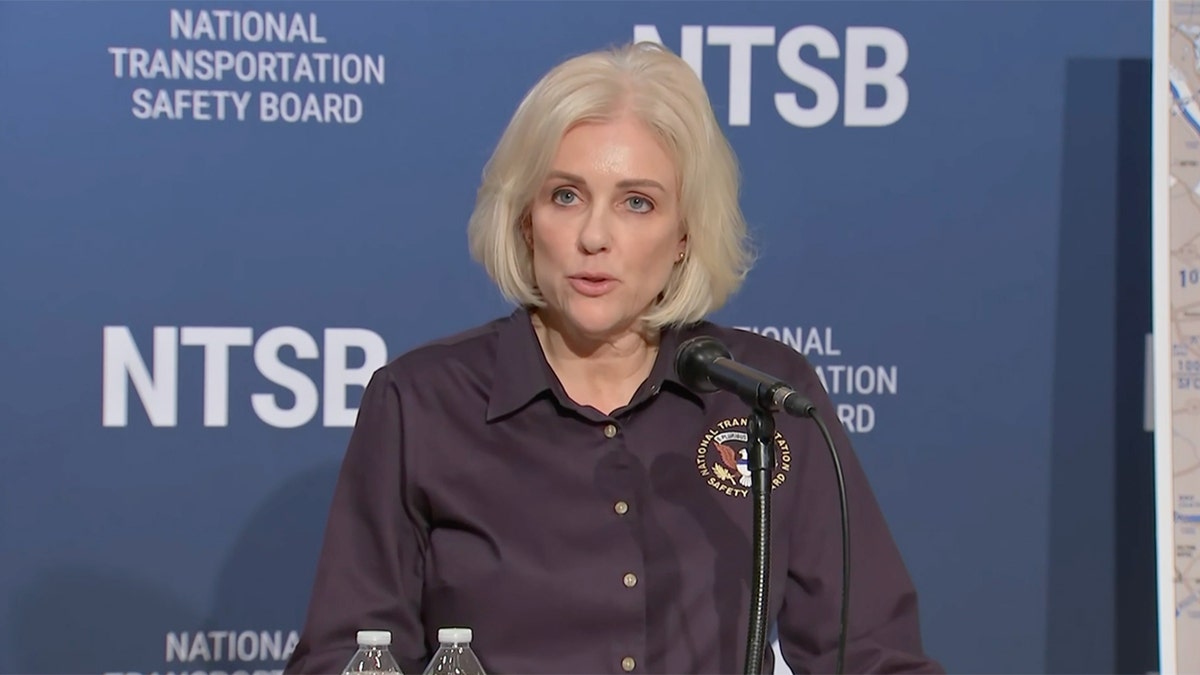
Authorities have confirmed that the crew aboard the Army Black Hawk helicopter involved in a midair collision with an American Airlines passenger jet near Ronald Reagan Washington International Airport may have been unaware they were flying at an excessive altitude and potentially missed crucial communications from air traffic control just before the tragic incident.
The January 29 accident over the Potomac River, which occurred during a routine “flight check,” resulted in the deaths of 67 individuals, with no survivors.
National Transportation Safety Board (NTSB) Chair Jennifer Homendy stated at a press conference that essential information from air traffic control, transmitted to the Black Hawk mere seconds before the crash, might not have been acknowledged by the crew.

Recovery teams collect debris from the Potomac River following the crash involving American Eagle Flight 5342 and a Black Hawk helicopter. (Reuters/Carlos Barria)
SHOCKING FOOTAGE FROM MILITARY BASE SHOWCASES NEW PERSPECTIVE OF MID-AIR DISASTER
Just shy of 20 seconds before the collision, a radio call from the control tower was captured on both cockpit voice recorders (CVR), instructing the Black Hawk to “pass behind” the CRJ passenger aircraft.
“The CVR data from the Black Hawk indicated that the part of the message requesting them to, ‘pass behind the …,’ may not have reached the Black Hawk crew,” stated Homendy.
The transmission was interrupted by an 0.8-second microphone keying from the Black Hawk, as the crew was attempting to communicate with air traffic control (ATC), according to the NTSB.
FAA AND NTSB TO PROVIDE BRIEFING TO SENATORS ON WASHINGTON, DC, MID-AIR COLLISION
The instructor pilot subsequently advised the pilot in control that ATC seemed to be directing the helicopter to veer left towards the eastern bank of the Potomac.
While the NTSB verified that the Black Hawk was operating at too high an altitude of 278 feet, the investigation also indicated that the barometric altimeters in the cockpit might have displayed a different reading.
“We’re encountering conflicting information in the data, which is why we cannot disclose the altitude for the entire route of the Black Hawk,” Homendy explained. “We are investigating the possibility that there was incorrect data. Were they reading something different in the cockpit compared to the [flight data recorder] (FDR) data, which was from the radio altimeter?”

Recovery teams work to retrieve wreckage from American Airlines Flight 5342 in the Potomac River on January 30. (Leigh Green for Fox News Digital)
The previous two issues could have potentially been addressed by the Black Hawk’s automatic dependent surveillance broadcast (ADS-B), which is designed to help avoid traffic conflicts by estimating distances and separation between aircraft.
However, the NTSB reported that the system was “not transmitting” during the flight, prompting an examination of the equipment, programming, and potential malfunctions.
Another possibility mentioned by Homendy is that the ADS-B feature might have been deactivated.
The investigation will continue as the NTSB also looks into visibility factors during the incident.

According to NTSB Chair Jennifer Homendy, several factors contributed to the January 29 crash. (Pool)
IDENTITIES RELEASED OF VICTIMS IN DC CRASH INVOLVING AMERICAN AIRLINES JET AND MILITARY HELICOPTER
Homendy mentioned that the Army Black Hawk crew was likely utilizing night-vision goggles during the flight, which may have impaired their ability to see in the bright conditions near the airport.
“This will be a factor in our visibility analysis,” she explained. “We will evaluate their sightlines leading up to the collision and throughout the accident sequence.”
Recordings from the flight reveal there was no verbal acknowledgment from the Black Hawk crew before the impact, indicating they were likely unaware of the imminent collision.









